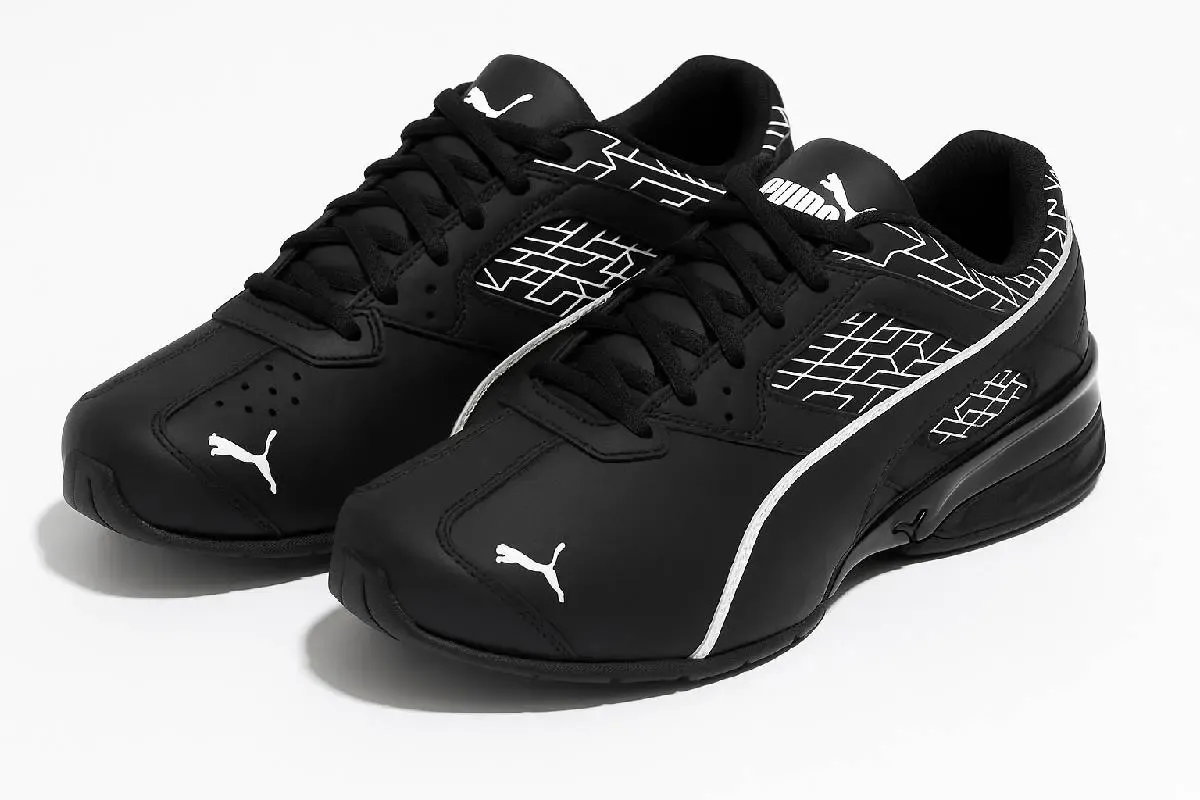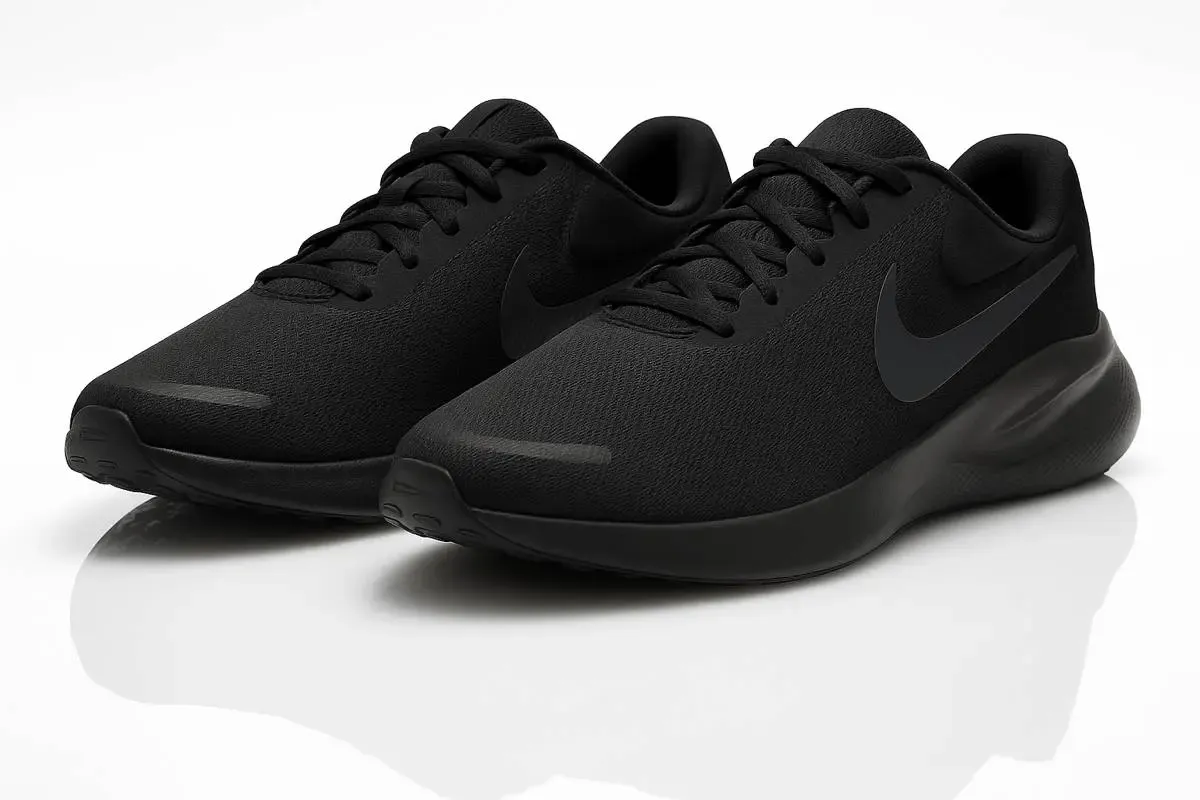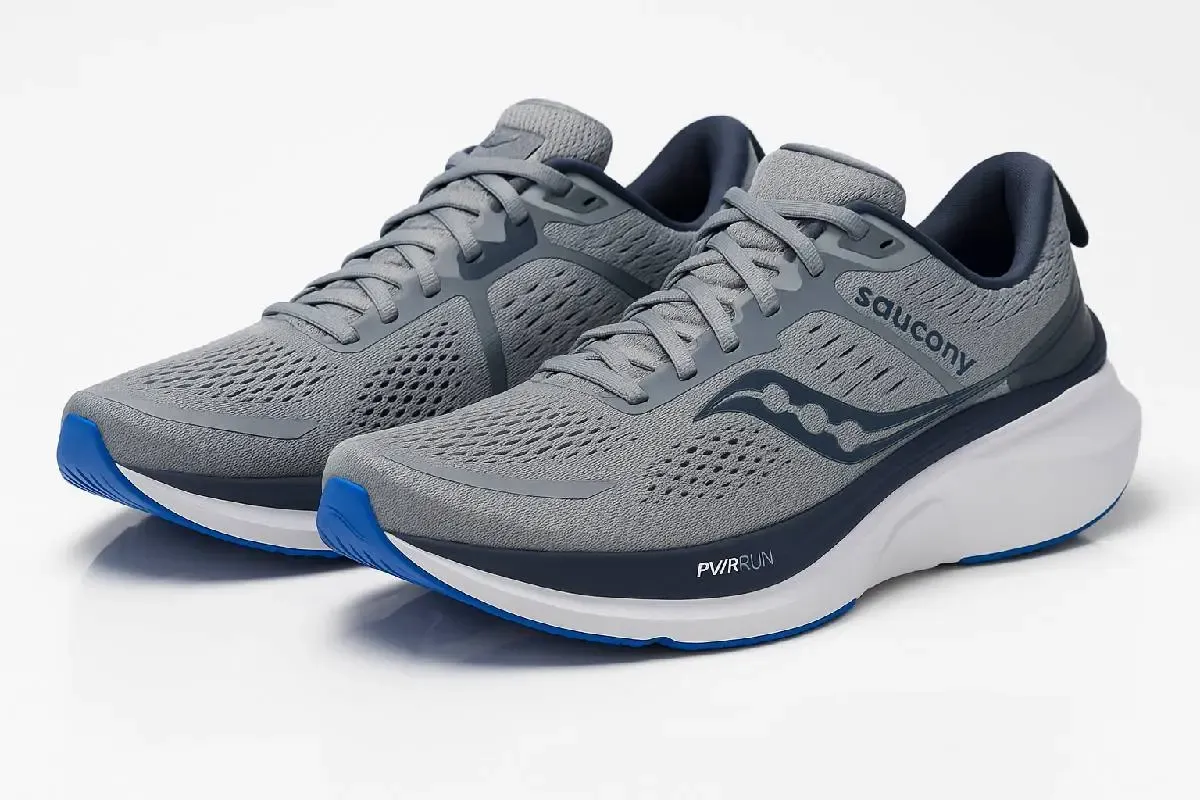Highlights
Positive
- Offers incredibly smooth and non-intrusive stability with its Center Path Technology.
- The roomy toe box and breathable upper provide exceptional, out-of-the-box comfort.
Negative
- Exposed midsole foam on the outsole raises concerns about long-term durability and grip in wet conditions.
User Insights
From 220 verified reviews
Rating Distribution
Feature Feedback
% positiveExperience Level
Ready to experience the Saucony Guide 18 Review?
Get yours today with fast shipping from Amazon
The Saucony Guide 18 has arrived, marking its place in the ever-competitive world of daily stability trainers, this shoe isn't here to reinvent the wheel. Instead, it’s a thoughtful and careful refinement of its very popular predecessor, the Guide 17. It aims to be that reliable, go-to workhorse for the majority of your miles, especially for runners who need a bit of support but absolutely hate the stiff, controlling feel of old-school stability shoes.
Quick Take
Overall Rating: 4.1/5
Best For: Runners seeking mild to moderate stability, daily training and easy runs, long runs, and those with mild pronation.
Key Strengths: Non-intrusive and gentle stability from its Center Path Technology, a very comfortable and balanced cushioned ride, an exceptionally breathable engineered mesh upper, and an accommodating fit with a roomy toe box and multiple width options.
Notable Limitations: The PWRRUN foam midsole can feel a bit uninspiring or "bland" for faster efforts, the outsole's exposed foam raises concerns about long-term durability and wet-weather grip, and it's definitely not a shoe built for speed work.
Visual Snapshot Summary

What Makes Saucony Guide 18 Stand Out?
So, what’s the big deal with the Guide 18? Honestly, it’s all about the stability, but not in the way you might think. For years, stability shoes meant a hard "medial post" – basically a block of dense foam under your arch that felt like it was forcing your foot straight. It was effective, but often clunky and uncomfortable. Saucony has completely moved away from that with their "Center Path Technology".
Let me explain: instead of posting, the Guide 18 uses a different approach. It has a much wider base to land on, which is inherently stable. Then, it uses higher midsole sidewalls that wrap up and "cradle" your foot, keeping you centered within the shoe. Finally, it has an asymmetrical profile that helps guide your foot through a smoother transition from heel to toe. The whole point isn't to force your foot into a new position, but to gently guide it to the path of least resistance. This makes the support feel incredibly natural and non-intrusive, so much so that even some neutral runners find it comfortable and supportive. They’ve also topped the midsole with a plush PWRRUN+ sockliner, which gives it a fantastic step-in feel that masks the firmer foam underneath. As one reviewer summed it up: "The Saucony Guide 18 is everything we loved about last year's edition and more...it feels the way I imagine the Hoka Clifton is meant to feel — wide, stable, cushioned, and has a smooth rocker."
Real Customer Experiences
The general feeling online is that the Guide 18 is a solid, reliable choice, though it's not without its critics.
- Positive: A significant number of runners absolutely love the combination of balanced cushioning and support. It's frequently praised as a "workhorse" shoe that's perfect for logging daily miles, tackling long runs, or even just for walking all day.
- Positive: The fit, especially the roomy toe box, is a huge win for many users . People with average to slightly wider feet feel right at home, and the availability of wide and extra-wide sizes is a major selling point.
- Negative: The most common complaint is directed at the midsole foam. While the PWRRUN foam is dependable, many find it "uninspiring," "bland," or "flat," especially compared to the new, energetic super-foams on the market. It's just not a "fun" or "bouncy" ride.
- Negative: The other major gripe is outsole durability and grip. The large patches of exposed midsole foam, designed to save weight, are prone to scuffing and wearing down prematurely. This also leads to less-than-ideal traction on wet or slippery surfaces.
Here are a couple of quotes that capture the sentiment well:
"Great for lung runs as they are super comfy and theres a lot of room in the toe area for my wide-ish feet. They are everything BUT a speed shoe. Which is expected as they are meant to be for zone 2 / recovery and long runs!"
"I sort of felt hard to distinguish the stability underfoot in this year's testing of the Guide 18. It felt stable enough on the run, but compared to the prominence of medial support in the Brooks Beast GTS 24, New Balance 860 v14, or Saucony Hurricane 24, I definitely felt like I was missing some medial stability underfoot here."
Design and Build Quality
Let's break down the shoe, piece by piece.
- Upper: The upper is a real high point here. It's built from an engineered mesh that is exceptionally breathable and lightweight. This new mesh feels a bit more forgiving and stretchy than the previous version. Inside, you’ve got a well-padded gusseted tongue that stays locked in place, and a comfortable, secure heel collar that cups the back of your foot nicely. This combination provides a great lockdown without any pinching or hot spots.
- Midsole: This is the engine of the shoe. It features a full-length midsole of PWRRUN foam. This is Saucony’s reliable EVA-based compound that provides good shock absorption and a stable platform. It's intentionally on the firmer side of cushioned to maintain that stable base. The magic, as mentioned, is the Center Path Technology, which uses those high sidewalls to cradle your foot. The shoe has a 35mm stack in the heel and 29mm in the forefoot, for a total 6mm drop. To offset the firm PWRRUN, there's a lovely PWRRUN+ sockliner right under your foot, which adds a noticeable layer of softness and step-in comfort.
- Outsole: The outsole is a strategic mix of rubber and foam. You get XT-900 carbon rubber placed in high-wear zones like the lateral heel and under the forefoot. This rubber is durable, with a measured hardness of 87.5 HC. However, to cut weight, there are large sections of exposed PWRRUN midsole foam. This is the shoe's main weakness, as these areas are prone to premature wear and can be quite slippery on wet pavement.
- Weight: It weighs in at 272 grams (9.6 oz) for a men's US size 9. This is a very respectable weight for a stability trainer with this level of cushioning.
Comfort and Fit
When it comes to just putting the shoe on and living in it, the Guide 18 scores very high marks.
- Sizing Advice: The consensus is clear: the Saucony Guide 18 fits true to size. Saucony is known for its consistency, so sticking with your usual running shoe size is the way to go.
- Width Profile: This is a standout feature. The standard width model is already quite generous, with a roomy toe box that allows for natural toe splay. This is a huge plus for comfort on long runs. But the best part is the inclusivity—the Guide 18 is widely available in wide (2E) and extra-wide (4E) options for men, and wide (D) and extra-wide (2E) for women in several colorways. This makes it a fantastic choice for runners with broader feet who often struggle to find a good fit.
- Break-In: You can forget about a break-in period. The Guide 18 is comfortable right out of the box. The soft upper materials, padded heel, and secure lacing system work together to give you an immediate sense of comfort and security.
Love the comfort features?
See current availability and pricing
As one runner mentioned, it's a "fantastically comfortable shoe... there's plenty of space in the fore foot. around the sides of the forefoot. the midfoot is very comfortable as well. and there's plenty of padding. around the ankle collar."
Style and Versatility
The days of stability shoes looking like medical devices are long gone, and the Guide 18 is proof. It has a clean, modern aesthetic that looks fast and purposeful. The engineered mesh upper and the sculpted midsole give it a sleek profile. It’s available in a good range of colorways, from subtle, work-appropriate blacks and greys to brighter, gradient designs. There are also reflective highlights for those early morning or late evening runs.
This is an incredibly versatile shoe. Its primary job is as a daily trainer for easy, recovery, and long-distance runs. But because it’s so comfortable and the stability is so subtle, it’s also an outstanding walking shoe. Many people, especially those in professions that require a lot of standing like nursing, will find this shoe to be a lifesaver. It's also stylish enough to wear casually with jeans or joggers without a second thought.
Quality and Durability
This is where the review gets a bit complicated. The overall build quality feels high. The upper is robust, the stitching is clean, and the PWRRUN midsole itself is a workhorse material known for holding up well over time. The XT-900 carbon rubber that is on the outsole is tough and will last a long time. About 75% of the feedback you'll see is positive or neutral about the shoe's general toughness.
However, the major, glaring issue is the exposed PWRRUN midsole foam on the outsole. This is a cost and weight-saving measure, but it comes at the expense of durability and grip. This softer foam gets chewed up much faster than rubber, especially if you scuff your feet or run on anything other than smooth pavement. This exposed foam is also the reason for the poor wet-weather traction. As one user bluntly put it, they observed "terrible durability of the exposed foam" after just a short time.
Decision Matrix
| Scenario ↓ / Criterion → | Comfort | Breathability | Rain/Grip | Style |
|---|---|---|---|---|
| Daily Urban | ✓ | ✓ | ○ | ✓ |
| Office Casual | ✓ | ✓ | ○ | ✓ |
| Light Sport/Gym | ✓ | ✓ | ○ | ○ |
Legend: ✓ = Good ○ = Average ✕ = Poor
Further Reading
Who Should Buy
Perfect For
- Runners with mild to moderate overpronation who want a modern, non-intrusive support system.
- Neutral runners who just want an inherently stable and reliable shoe for long miles or recovery days.
- Anyone looking for a cushioned and comfortable daily trainer to handle the bulk of their weekly mileage.
- Runners with average to wide feet who need a roomy toe box or access to dedicated wide (2E) and extra-wide (4E) sizes.
- Walkers and professionals (like nurses or teachers) who are on their feet all day and need a blend of cushioning and support.
- Daily training runners seeking comfort
Consider Alternatives If
- Runners with severe overpronation who need the aggressive correction of a traditional, firm medial post.
- Athletes looking for a fast, bouncy, and responsive shoe for speed work, tempo runs, or race day. The PWRRUN foam is just not built for that.
- Anyone who does most of their running in wet, rainy conditions and places a high priority on excellent outsole grip.
- Runners who want a maximalist, "sink-in" plush cushioning experience. The Guide 18 is comfortable, but it's more of a balanced and stable feel.
Final Verdict
The Saucony Guide 18 is a fantastic evolution of a beloved stability line. It confidently delivers on its promise of "guidance, not correction" with its Center Path Technology, making it one of the most comfortable and non-intrusive stability shoes on the market. Its breathable, roomy upper is a dream for many foot shapes. While the PWRRUN foam won't win any awards for energy return and the exposed outsole foam is a legitimate concern for durability and wet-weather grip, it remains a top-tier workhorse. For daily miles, long runs, and all-day comfort, it’s a reliable partner.
As an Amazon Associate we earn from qualifying purchases. This helps support our site so we can keep bringing you the best content!
Frequently Asked Questions
Is the Saucony Guide 18 a good stability shoe?
Does the Saucony Guide 18 fit true to size?
What is the difference between the Saucony Guide 18 and the Guide 17?
Related Reviews

Puma Tazon 6 Review
Discover if the Puma Tazon 6 is the right training shoe for you with our in-depth review. We cover comfort, performance, fit, and value for money.

Adidas Duramo 10 Review
Read our expert Adidas Duramo 10 review to see if this budget-friendly trainer is worth it. We analyze its comfort, durability, and performance for running, gym, and daily use.

Nike Revolution 7 Review
Get an honest look at the Nike Revolution 7. This in-depth review covers its value, comfort, and style for running, gym, and daily wear. Is it for you?
